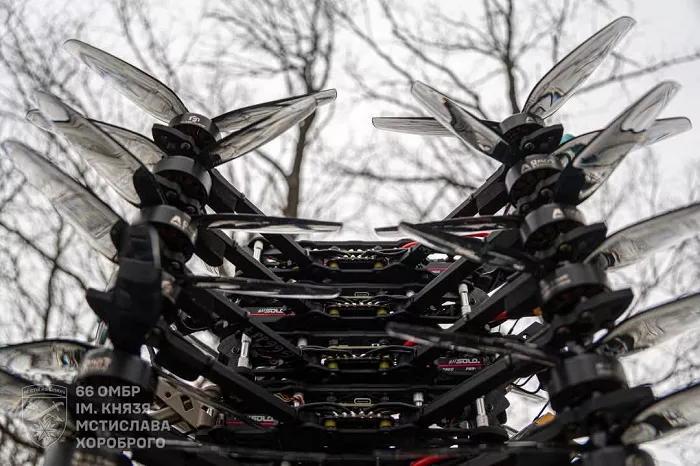Modern warfare is increasingly shaped by the use of drones and long-range strike systems, replacing traditional infantry battles, according to Yurii “Lys,” chief sergeant of the unmanned systems battalion in Ukraine’s 24th Separate Mechanized Brigade.
Drones have become a crucial part of Ukraine’s defense against Russia, dramatically altering the dynamics of the battlefield. These unmanned systems offer live surveillance of Russian troop movements, artillery positions, and supply lines, while also allowing for targeted strikes on key Russian infrastructure such as command centers, fuel depots, and personnel.
Ukraine has emerged as a leader in drone innovation, producing over 5 million FPV drones annually. The country has also developed advanced long-range missile-drone hybrids like the Palianytsia and Peklo, designed to target Russian military facilities.
The presence of unmanned aerial vehicles (UAVs) has expanded the so-called “gray zone”—the contested area between opposing forces. Yurii noted that this area has significantly grown over the past year. “If a year ago the gray zone was about 500 meters to 2 km wide, it now stretches 5 to 6 km, and in some places even up to 7 km,” he said.
Approximately 50 drones, both reconnaissance and strike types, are in the air at any given moment, Yurii explained. This figure includes both Ukrainian and Russian drones.
Russian forces are also enhancing their drone capabilities, often mimicking Ukrainian tactics, such as drone interception and battlefield mining. Yurii observed that the war has become less about infantry or armored units clashing and more about long-range, remote confrontations. “The current battlefield is characterized by increased engagement distances and expanded kill zones,” he said.
In addition to drones, Russian forces have increasingly used motorcycles, ATVs, and light vehicles to move through areas monitored by Ukrainian drones. Yurii explained that Russian units are dispersing their forces to avoid detection, often launching attacks with small, mobile groups. “These mobile groups are a big problem for us because we need to detect and engage them with a large number of strike drones,” he added.
Despite these challenges, Yurii highlighted that Ukraine’s tactics, including reconnaissance, fire targeting, and route mining, have been successful.
As Ukraine continues to lead the way in drone warfare, European nations are investing heavily in similar technologies. Estonia, with Luxembourg’s support, has launched a €5 million drone training center. Denmark is building a $110 million drone facility, set to train operators by 2026, while Finland is using its Arctic conditions for drone testing. Ukraine has also sent instructors to the UK to share their frontline knowledge, and Canada’s ZenaTech is setting up a drone testing site in Türkiye.


